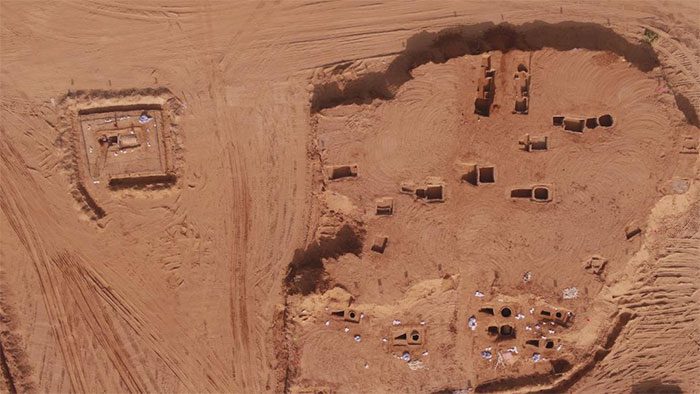Twenty-two ancient tombs have been discovered on a hill in Laozhuangshi village, located in Kaifeng City – a former prefecture during the Northern Song Dynasty (960-1127).
Recently, Chinese archaeologists uncovered 22 ancient tombs dating back nearly 1,600 years in Henan Province, central China.

Group of 22 ancient tombs dating back nearly 1,600 years in Henan Province (China) in an aerial photo. (Source: China Daily).
Specifically, these tombs include two from the Eastern Han period (25-220), 12 from the Song Dynasty (960-1279), and eight from the Ming Dynasty (1368-1644) and Qing Dynasty (1644-1911), all found on a hill in Laozhuangshi village, which was once a prefecture under the Northern Song Dynasty.
They were primarily constructed based on a brick heating structure with stairs, believed to belong to a family. Inside these tombs, archaeologists discovered intricately decorated wall paintings filled with vibrant colors, depicting themes such as flowers, birds, mythical creatures, furniture, and weapons.
Chang Hongjie, an archaeologist at the Henan Provincial Institute of Archaeology and Cultural Relics, stated that among the artifacts found in these tombs were tables, chairs, dining sets, as well as wine or teapots placed on the tomb’s roof. Additionally, there were other items such as scissors, irons, racks, and wardrobes.
Mr. Chang further noted that the arrangement of items within the tombs provides a vivid image of the daily lives of the tomb owners, offering valuable insights into the social life and burial customs during the Song Dynasty.
According to Chinese archaeologists, the interior decorations and external designs of the aforementioned tombs resemble actual houses, helping them understand the lives of the people in Kaifeng during the Song Dynasty.

















































